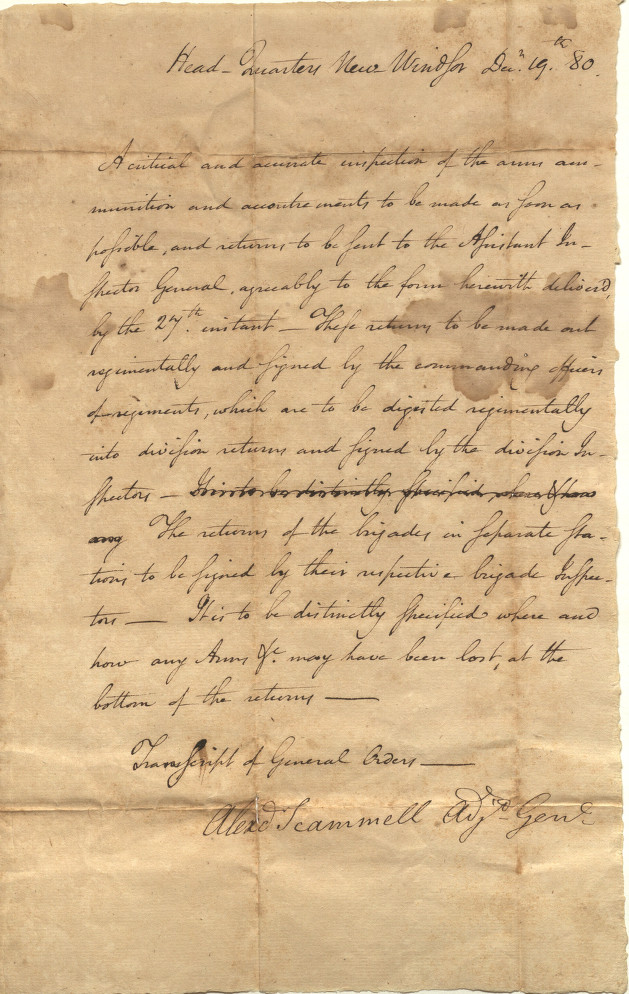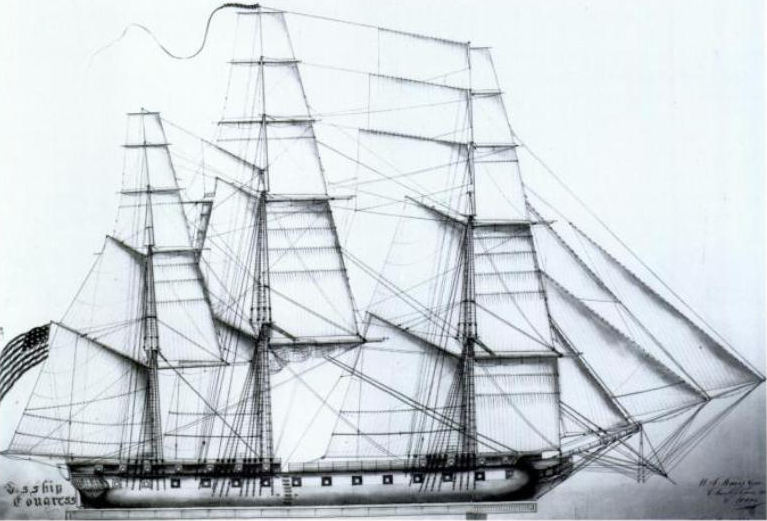|
USRC Scammel (1798)
USRC ''Scammel'' or sometimes referred to as ''Scammel II'' was a Revenue Cutter built in 1798 to serve in the Quasi-War with France. After completion she was transferred to the U.S. Navy and served in the West Indies naval squadron commanded by Commodore Commodore may refer to: Ranks * Commodore (rank), a naval rank ** Commodore (Royal Navy), in the United Kingdom ** Commodore (United States) ** Commodore (Canada) ** Commodore (Finland) ** Commodore (Germany) or ''Kommodore'' * Air commodore, a ... John Barry. She assisted the sloop in the capture of the French ship ''Hussar''. After the war, the Navy retained ''Scammel'' until it was sold in 1801. References {{DEFAULTSORT:Scammel Ships of the United States Revenue Cutter Service 1798 ships ... [...More Info...] [...Related Items...] OR: [Wikipedia] [Google] [Baidu] |
Alexander Scammell
Alexander Scammell (March 22, 1747 – October 6, 1781) was a Harvard educated attorney and an officer in the Continental Army during the American Revolutionary War. He was wounded on September 30, 1781, near Yorktown and subsequently died on October 6 in Williamsburg, Virginia, making him, a colonel, the highest ranking American officer killed during the Siege of Yorktown. __TOC__ Biography Scammell was born March 22, 1747, in the part of Mendon, Massachusetts, which eventually became Milford, Massachusetts. His father, Doctor Samuel Leslie Scammell died in 1753 and Alexander and his older brother, Samuel (b. 1739) were placed under the care and guidance of Reverend Amariah Frost. As a young man, Alexander graduated from Harvard College in 1769, and then moved to Plymouth County, MA where he taught school in the towns of Kingston and Plymouth and became a member of the Old Colony Club celebrating the Plymouth landing. In 1772 he moved to Portsmouth, NH where he worked surveying ... [...More Info...] [...Related Items...] OR: [Wikipedia] [Google] [Baidu] |
Continental Army
The Continental Army was the army of the United Colonies (the Thirteen Colonies) in the Revolutionary-era United States. It was formed by the Second Continental Congress after the outbreak of the American Revolutionary War, and was established by a resolution of Congress on June 14, 1775. The Continental Army was created to coordinate military efforts of the Colonies in their war for independence against the British, who sought to keep their American lands under control. General George Washington was the commander-in-chief of the army throughout the war. The Continental Army was supplemented by local militias and volunteer troops that were either loyal to individual states or otherwise independent. Most of the Continental Army was disbanded in 1783 after the Treaty of Paris formally ended the fighting. The 1st and 2nd Regiments of the Army went on to form what was to become the Legion of the United States in 1792. This became the foundation of what is now the United States ... [...More Info...] [...Related Items...] OR: [Wikipedia] [Google] [Baidu] |
James Hackett (shipbuilder)
James Hackett (1739–1802) was an American shipbuilder in New Hampshire in the late 18th century. He was responsible for the construction of a number of significant Revolutionary War-era warships for the fledgling country, including the ''Raleigh'', ''Ranger'', ''America'', ''Congress'', ''Portsmouth'', two cutters for the United States Revenue Cutter Service, as well as the ''Crescent'', built for Algiers as tribute. As a teenager, he served with Rogers' Rangers during the French and Indian War. His later military service included serving as lieutenant colonel in the New Hampshire Militia during the Revolutionary War and after in several different units. Early life Colonel James Hackett was born in Amesbury, Massachusetts on November 29, 1739, to a family of accomplished shipbuilders. He apprenticed as a merchant shipwright. French and Indian war When he was only 15 years old he joined Rogers' Rangers. Hackett saw more brutal combat before the age of 21 than man ... [...More Info...] [...Related Items...] OR: [Wikipedia] [Google] [Baidu] |
Badger's Island
Badger's Island is located in the Piscataqua River at Kittery, Maine, directly opposite Portsmouth, New Hampshire. It carries U.S. Route 1 between the states, connecting to the Kittery mainland by the Badger's Island Bridge, and to New Hampshire by the Memorial Bridge. Now largely a suburb of Portsmouth, the island features houses, condominiums, restaurants and marinas. History Shipbuilding center Prior to the Civil War, Badger's Island was famous for shipbuilding. Eastern white pine for masts, together with lumber for hulls, arrived down the Piscataqua River from inland forests. Only two tenths of a mile (322 m) from Portsmouth's busy wharves, the island's gradual slope into the deep channel between was ideal for launching vessels. First called Rising Castle Island, it changed to Langdon's Island when John Langdon established his shipyard. The first U. S. Navy ships commissioned by the Continental Congress were built here by master shipbuilder James Hackett, including USS ... [...More Info...] [...Related Items...] OR: [Wikipedia] [Google] [Baidu] |
Kittery, Maine
Kittery is a town in York County, Maine, United States. Home to the Portsmouth Naval Shipyard on Seavey's Island, Kittery includes Badger's Island, the seaside district of Kittery Point, and part of the Isles of Shoals. The southernmost town in the state, it is a tourist destination known for its many outlet stores. Kittery is part of the Portland– South Portland–Biddeford, Maine metropolitan statistical area. The town's population was 10,070 at the 2020 census. History English settlement around the natural harbor of the Piscataqua River estuary began about 1623. By 1632 the community was protected by Fort William and Mary on today's New Hampshire side of the river; in 1689 defensive works that later became Fort McClary in Kittery Point were added on today's Maine side to the north. Kittery was incorporated in 1647, staking a claim as the "oldest incorporated town in Maine." It was named after the birthplace of a founder, Alexander Shapleigh, from his manor of Kitt ... [...More Info...] [...Related Items...] OR: [Wikipedia] [Google] [Baidu] |
United States Coast Guard Cutter
United States Coast Guard Cutter is the term used by the U.S. Coast Guard for its commissioned vessels. They are or greater in length and have a permanently assigned crew with accommodations aboard. They carry the ship prefix USCGC. History of the USCG cutters The Revenue Marine and the Revenue Cutter Service, as it was known variously throughout the late 18th and the 19th centuries, referred to its ships as cutters. The term is English in origin and refers to a specific type of vessel, namely, "a small, decked ship with one mast and bowsprit, with a gaff mainsail on a boom, a square yard and topsail, and two jibs or a jib and a staysail." With general usage, that term came to define any vessel of the United Kingdom's HM Customs and Excise and the term was adopted by the U.S. Treasury Department at the creation of what would become the Revenue Marine. Since that time, no matter what the vessel type, the service has referred to its vessels with permanently assigned crew ... [...More Info...] [...Related Items...] OR: [Wikipedia] [Google] [Baidu] |
Quasi-War
The Quasi-War (french: Quasi-guerre) was an undeclared naval war fought from 1798 to 1800 between the United States and the French First Republic, primarily in the Caribbean and off the East Coast of the United States. The ability of Congress to authorize military action without a formal declaration of war was later confirmed by the Supreme Court and formed the basis of many similar actions since, including American participation in the Vietnam War and the 1991 Gulf War. In 1793, Congress suspended repayments of French loans incurred during the American Revolutionary War. The dispute escalated further due to different interpretations of the 1778 treaties of Alliance and Commerce between the two countries. France, then engaged in the 1792–1797 War of the First Coalition, which included Great Britain, viewed the 1794 Jay Treaty between the United States and Britain as incompatible with those treaties, and retaliated by seizing American ships trading with Britain. D ... [...More Info...] [...Related Items...] OR: [Wikipedia] [Google] [Baidu] |
Commodore (United States)
Commodore was an early title and later a rank in the United States Navy, United States Coast Guard and the Confederate States Navy, and also has been a rank in the United States Public Health Service Commissioned Corps and the National Oceanic and Atmospheric Administration Commissioned Officer Corps (NOAA Corps) and its ancestor organizations. For over two centuries, the designation has been given varying levels of authority and formality. Today, it is no longer a specific rank within active-duty or reserve forces or in the Public Health Service Commissioned Corps or NOAA Corps, but it remains in use as an ''honorary title'' within the U.S. Navy and U.S. Coast Guard for those senior captains (pay grade O-6) in command of operational organizations composed of multiple independent subordinate naval units (e.g., multiple independent ships or aviation squadrons). However, "commodore" is a rank that is actively used to this day in the United States Coast Guard Auxiliary, the civ ... [...More Info...] [...Related Items...] OR: [Wikipedia] [Google] [Baidu] |
John Barry (naval Officer)
John Barry (March 25, 1745 – September 13, 1803) was an Irish-American officer in the Continental Navy during the American Revolutionary War and later in the United States Navy. He has been credited as "The Father of the American Navy" (and shares that moniker with John Paul Jones and John Adams) and was appointed a captain in the Continental Navy on December 7, 1775. He was the first captain placed in command of a U.S. warship commissioned for service under the Continental flag. After the war, he became the first commissioned U.S. naval officer, at the rank of commodore, receiving his commission from President George Washington in 1797. Early life and education Barry was born on March 25, 1745, in Ballysampson, Tacumshane, County Wexford, Ireland to a Catholic family. When Barry's family was evicted from their home by their English landlord, they moved to Rosslare on the coast, where his uncle worked a fishing skiff. As a young man, Barry determined upon a life as a seaman ... [...More Info...] [...Related Items...] OR: [Wikipedia] [Google] [Baidu] |
Ships Of The United States Revenue Cutter Service
A ship is a large watercraft that travels the world's oceans and other sufficiently deep waterways, carrying cargo or passengers, or in support of specialized missions, such as defense, research, and fishing. Ships are generally distinguished from boats, based on size, shape, load capacity, and purpose. Ships have supported exploration, trade, warfare, migration, colonization, and science. After the 15th century, new crops that had come from and to the Americas via the European seafarers significantly contributed to world population growth. Ship transport is responsible for the largest portion of world commerce. The word ''ship'' has meant, depending on the era and the context, either just a large vessel or specifically a ship-rigged sailing ship with three or more masts, each of which is square-rigged. As of 2016, there were more than 49,000 merchant ships, totaling almost 1.8 billion dead weight tons. Of these 28% were oil tankers, 43% were bulk carriers, and 13% were cont ... [...More Info...] [...Related Items...] OR: [Wikipedia] [Google] [Baidu] |





